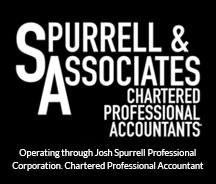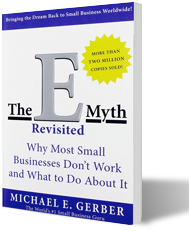Virtual Accountant | What Is The Difference Between T4 And T5 Slips
One assumption that entrepreneurs often make according to a virtual accountant is that if an entrepreneur is good at the work that their business does, that makes them good at running their business. But just because an entrepreneur is good at dry welling, or dentistry, or whatever product or service their business provides, does not mean they know how to file their taxes properly. In fact, 50% of all entrepreneurs fail. One way that entrepreneurs can significantly help themselves, is by understanding what their T4 and T5 slip is, and how to file them properly in order to avoid triggering a payroll audit that could see them paying additional amounts in taxes and interest.
The first thing that an entrepreneur needs to know is what is a T4 and T5 slip. These are the slips that indicate how much money has been taken out of the business in salary and dividends. The T4 refers to employment income, so all business owners and staff have taken a salary or wages will get a T4 slip. It is important to note that all employment income has the proper source deductions withheld from the check and paid to the Canada revenue agency. This means the employer portion and the employee portion of CPP, as well as EI and income tax must be withheld from the staff or the business owners paychecks, and sent to CRA. A T5 slip, on the other hand, refers to money taken out of the business as dividends. Since only business owners or shareholders are allowed to take dividends, these the only people that should get a T5 slip, and no source deductions need to be taken from these amounts.
Any time an entrepreneur takes money out of their business, a virtual accountant says they can only do so in two ways: by salary or by dividends. Therefore, any amount of money that an entrepreneur takes out of their business will trigger one of those slips, or both. Business owners who do not file these slips on time, or at all could trigger a payroll audit. And these slips need to be filed by the last day in February. If entrepreneurs want to avoid triggering an audit, they should ensure that they submit those slips on time every year.
Not only do business owners have to file slips on time to avoid a payroll audits, but they also need to ensure that there source deductions that they should be sending onto CRA is paid in full and on time. While virtual accountant says the best practices would be for an entrepreneur to always send off-source deductions to CRA the same day that they do payroll, those amounts are actually doing by the fifteenth day of the following month that the money was disbursed. If an entrepreneur misses that day, they may trigger an audit.
In order to help entrepreneurs avoid triggering a payroll audits in their business, virtual accountant says they should understand that by filing their T4 and T5 slips on time, as well as remitting the correct amount of source deductions, can be enough to help an entrepreneur avoid this costly procedure that could end up with an entrepreneur having to pay more money.
Virtual Accountant | What Is The Difference Between T4 And T5 Slips
The reason why an entrepreneur would want to avoid a payroll audit says virtual accountant, is because a payroll audit can take a lot of an entrepreneurís time, but also cost them in additional tax that they may be assessed, plus penalties plus interest. If an entrepreneur has either not filed their T4 slips properly or on time, or if they have not submitted the correct payroll remittances to CRA, they could find themselves in the middle of a payroll audits.
Many entrepreneurs are unsure how CRA will even know if they have not paid enough in source deductions. However, by filing their T4 and T5 slips, that shows Canada revenue agency all of the employment income that has been dispersed in the business not only to the entrepreneur but to all of their staff members. Since source deductions are a calculation of specific percentages of CPP, EI and income tax, the T4 slip will clearly state how much source deductions should have been sent onto CRA. The virtual accountant says that if an entrepreneur does not remit the correct amount, they have until January 15 to catch up on any shortages. The best-case scenario would be Canada revenue agency sending a demand letter to the entrepreneur asking for the amounts that they have been shorted to be paid in full immediately. However, if they do not and they have shorted Canada revenue agency, that could be enough to trigger an audit.
When an auditor from Canada revenue agency comes to do a payroll audit of the business, they will request that the entrepreneur provides them with all of their bank statements for the previous year, as well as a general ledger for the business. The auditor is going to be looking at the bank statement to verify that an entrepreneur has not paid their staff with the check, and not claims that amount on their T4 slips, as well as not withheld source deductions. If an entrepreneur has made any payments to people and not businesses, Canada’s revenue agency may consider these transactions as payments to staff, whether they are staff or not. Therefore, entrepreneurs should understand that hiring unincorporated contractors is risky. For instance, if an entrepreneur hires a cleaning company once a month to clean their office, if that office cleaner is unincorporated, they may be considered an employee of the corporation.
Also, the auditor is going to review all of the money that an entrepreneur has taken out of their business to verify they have claimed it on their T4 or T5 slips. Virtual accountant says that if an entrepreneur has not claimed it properly, they will get hit with penalties, additional taxes, and interest charges. It can be very simple for entrepreneurs to avoid a payroll audit in the first place as long as they file their taxes on time and remit source deductions on time.

